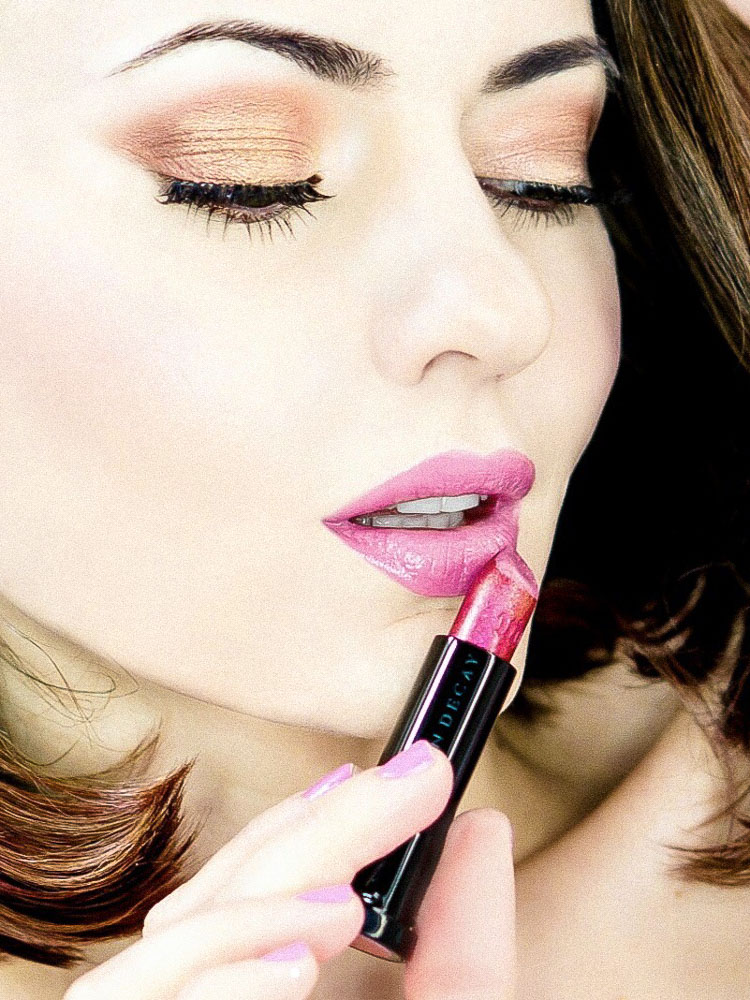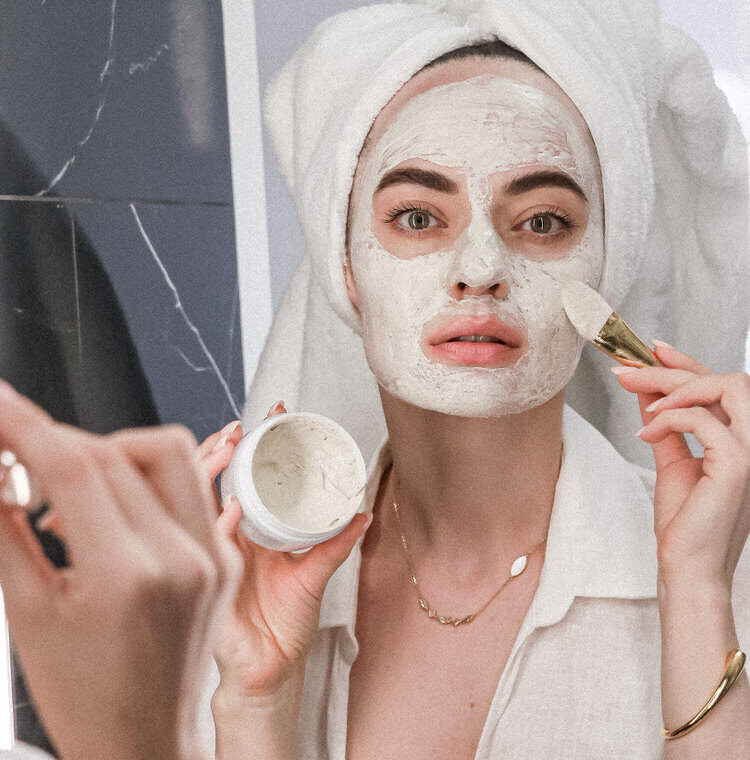
I attended La Roche-Posay Bootcamp, an all-day educational event on how to treat acne. In this post, I share the acne tips that helped me to become acne free. These acne tips proved to work for my combo skin: I no longer have adult acne.
Disclosure: This post is brought to you by La Roche-Posay.
Lifestyle Changes
Acne is not only a skin issue. Your lifestyle choices might influence how clean your skin looks too. In my situation, the biggest difference with acne happened when I adjusted my diet. Below, I provide some of the lifestyle changes that helped to improve my skin condition.
How Diet Affects Acne
My first realization that acne is might be diet-related happened during my trip to Belize. There, my health issues went out of control and I decided to try the elimination diet.
I stopped eating gluten and dairy for a few weeks. And I drunk a lot of water as the weather was hot and humid. I noticed the improvement not only with my cramps but also with my hormonal acne.
At the La Roche-Posay Bootcamp, I learned that diet change indeed might impact acne. Dr. Tamara Lazic-Strugar explained that low-fat milk products affect how your skin looks. You don’t have to cut milk from your diet though. As of now, only low-fat dairy products might impact acne.
For years now, I’m not eating any dairy products, and this change had a tremendous effect on how my skin looks. And yes, by saying “no dairy” I also mean no pastries, desserts, butter, or bread. No byproducts of milk too!
For All the Gym Addicts Out There
Another essential point to know is skin hygiene at the gym.
Dr. Lazic-Strugar explained that sweating at the gym leads to blocking your pores. It also spreads bacteria all over your face. Since I learned that, my rule of thumb is to wash my face immediately after a workout. Yes, even if I was planning to go straight home after my barre class.
Your after-workout face wash should not be harsh on your skin. A tiny percentage of Salicylic Acid in your cleanser might be a good idea. But if your cleanser doesn’t contain this ingredient, you’ll be fine too. The idea here is to remove the sweat from your skin and apply SPF for your walk home.
My absolute favorite post-workout cleanser is La Roche-Posay Toleriane Purifying Foaming Cleanser. I recently finished an entire jumbo tube of this cleanser, that could only mean two things. Either I workout too often or I love that cleanser!
Another option is to use La Roche-Posay Effaclar Clarifying Oil-Free Towelettes. These wipes contain Salicylic Acid that cleanses away oil and impurities. These are not your typical makeup removing wipes though! Don’t use them on your eyes.

Skincare Changes
On my acne-free journey, I also experimented with skincare products. Some of these skincare tricks worked. Some of them failed. Below, I share only those tips that proved to be working for my skin.
Why I Stopped Using Oils
There are a lot of face oils designed for acne-prone skin. These products are all over social media. People swear that these oils “changed their skin.”
As a skincare junkie, I fell into the trap of testing many of those “miracle” products. And the results were predictable. I had a great first impression of new face oil. But over time it started irritating my skin and cause breakouts.
I can’t provide a scientific explanation of why it’s happening, but my skin doesn’t react well to oils. After a few experiments, I finally decided to stick to the advice given by Dr. Lazic-Strugar. She recommends people with acne-prone skin to go oil-free.
Eliminating oils from my skincare routine doesn’t mean hydrating my skin. I do use serums and moisturizers (and even cleansing oils). But I skip on face oils.
Here is a tip on how to figure out whether a product is suitable for acne-prone skin. Look for two keywords on the package: “non-comedogenic” (or “non-acnegenic”) and “oil-free.”
“Non-comedogenic” means that the product doesn’t clog your pores and causes acne.
Oil-free formulas are usually more suitable for people with skin prone to breakouts.
Salicylic Acid vs. Benzoyl Peroxide
Another ingredient sensitivity that I recently discovered is Benzoyl Peroxide. This is a common ingredient in spot acne treatments. You apply such products to the area of active breakouts to dry them out.
Benzoyl Peroxide comes in different percentages — from less to more concentrated. But for me, even the smallest amount of this ingredient causes irritation.
I prefer either avoiding spot treatments at all. Or use only those products that contain Salicylic Acid. Another alternative to Benzoyl Peroxide, Tea Tree Oil, also irritates my skin.
There is a debate on whether spot acne treatments are good for your skin. For my skin, it’s not the best solution. Instead of treating each individual zit, I prefer to treat an entire area of the breakouts.
Masks Are Life Savers
Another skincare change that helped me to improve the condition of my skin is the regular use of face masks.
I have combination skin. That’s why the multi-masking strategy works best for my skin concerns. I apply a hydrating mask on the cheeks area and use a clarifying mask on the T-zone.
That way, I balance my skin out. Dry patches are getting more normal while pores on the oily patches of my skin are getting more balanced.
My favorite mask combo is Effaclar Clay Mask for the T-zone and Hydraphase Intense Mask for dry patches.
Revise Your Sunscreen Routine
Another potential skin irritant to keep in mind if you have acne-prone skin is sunscreen. I’m talking not only about your everyday tinted moisturizer. But also things like high SPF cream for your beach vacation and makeup products that contain SPF.
I spent years finding suitable sunscreen products for my skin. And I finally found what works for my skin type.
For every day, I use La Roche-Posay Effaclar Moisturizer UV SPF 30. Its gentle, oil-free and non-irritating formula works for both dry and oily patches of my skin. The product contains SPF 30, which is enough for your daily wear, and I love how it interacts with my foundation.
By the way, these days, I avoid using foundations with SPF. As it turned out, it was one of the causes of irritation and acne for my skin. Instead, I go for oil-free, sunscreen-free foundation formulas. And then apply mineral SPF powder. Such a product is also a great way to reapply your sunscreen without ruining makeup.
For beach vacations, I recently started using La Roche-Posay Anthelios Clear Skin Sunscreen. It’s designed for acne-prone skin. I love that it quickly absorbs into the skin and provides a matte finish. It feels so comfortable to wear in a warm climate!
Facials Matter
Finally, if you are struggling with acne, regular facials might help. These days, I’m trying to be as consistent with my facials as it’s possible. These help to reduce the appearance of pores around my nose area.
Dr. Lazic-Strugar explained blackheads look dark because it’s oxidized oil that can’t come out to the surface of your skin. If you do regular facials, your pores don’t get permanently clean. But your pores visually appear smaller as an aesthetician removes oxidized dark-colored “blockage” from your skin.
I noticed that if I stick to regular facials, I don’t need to use pore-refining primers as my skin looks less clogged.

Makeup Changes
If might sound irrelevant, but makeup you choose to apply on your skin can affect your acne situation. Some makeup products contain fragrances or irritating ingredients. How hygienic you go about applying your makeup also matters. Let’s talk about makeup routine changes that help to become acne free.
Use Thermal Water
I learned this tip back when I lived in Russia, but only recently started implementing it again.
I start my makeup routine with La Roche-Posay Micellar Water. This product eliminates excess oil and preps my skin. It also helps to clean my skin down to microscopic pollution particles. In other words, this step creates fewer “opportunities” for bacteria and acne to spread.
After cleansing my skin, I use selenium-rich thermal water by La Roche-Posay. It helps to restore the pH level of my skin and refresh the skin for makeup.
Revise Your Foundation Wardrobe
You’ll feel more confident covering up your acne with concealer and foundation. And that’s what I do by picking full-coverage makeup products. You have to be very careful, though, as makeup can clog your pores and cause acne.
Sunscreen-infused foundations and concealers might cause skin irritation. So I recommend avoiding those.
Also, it’s crucial to stay hygienic when using camouflaging products. I prefer foundations that have a pump. That way, you are not getting into the tube with your makeup sponge or a brush (aka avoid spreading bacteria).
When it comes to the concealer, I usually apply the product on the back of my hand first. Then, I use a brush or a beauty blender to distribute it on my skin. That way, I don’t contaminate the entire tube of a product.
The New Brush Strategy
Don’t forget to clean your makeup brushes daily or weekly to avoid spreading the germs all over your skin.
The moment I stop using my makeup sponge, I clean it with antibacterial soap and let it dry with a clean towel. By doing so, I make sure that it’s always fresh and clean and doesn’t stay out there, absorbing all the germs.
The same goes for foundation and concealer brushes. I can apply my eyeshadows with the same brush spritzed with a brush cleanser a few times before a deep wash. But I wash face brushes after every use. Granted: it’s not the most budget-savvy tip. But this strategy helped me to keep my skin clean and acne free.
There you have it: my in-depth guide on how to become acne free. I hope you learned some new acne-fighting tips. Feel free to ask follow-up questions in the comments.






